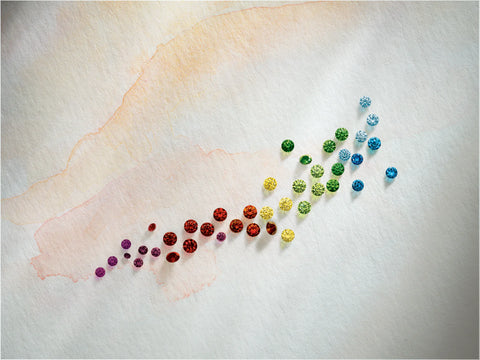Brought To You By IGI
Efforts to improve color in natural diamonds began centuries ago with oils, dyes and bright foils applied to the pavilions of diamonds in closed-back mountings. In modern times more sophisticated chemical coatings may be used to lighten the apparent color of diamonds in the D-Z range. These treatments can be scratched, worn off or changed with heat or chemical exposure, so they are not considered permanent. As such, IGI will not issue a grading report for such diamonds.
What About Lab Grown Diamonds?
As lab grown diamonds continue to gain popularity we are being asked whether modern processes commonly used by growers to reduce, eliminate or change a lab grown diamond’s color-appearance are permanent. The short answer is yes.
Fun Fact - Most of the world’s diamonds are brown.
Brown is the most common color variety of gem-quality diamonds, whether natural or lab grown. Brown diamonds account for around 15% of production in most natural diamond mines. Brown is also present in the majority of lab grown diamonds, although this number subsides as technology advances. That coloration is somewhat more prevalent in rough crystals grown using Chemical Vapor Deposition (CVD) process than it is using the High Pressure High Temperature (HPHT) process.

What Causes Brown Color?
Brown color in diamonds is attributable to how the atoms arrange themselves during growth, resultant vacancy clusters, etc. Common methods for reducing, eliminating or changing brown color in lab grown diamonds are exposure to post-growth HPHT, for stones grown using either method; or exposure to post-growth Low-Pressure High-Temperature (LPHT) for CVD grown stones. These intense processes help rearrange the atoms so that brown color becomes reduced, eliminated or changed to a softer shade such as gray or pink.
Stability
Present-day HPHT and LPHT treatments, along with modern irradiation, annealing and multi-process treatments (used to enhance fancy colored lab grown diamonds) alter the gemstone’s structure at the molecular level. This makes them perfectly stable for regular wear. Causing the atoms of the material to change again would require exposure to an equal or stronger process, so the modern treatments used to improve lab grown diamond color are considered permanent.
Further reporting
When present, IGI will report relevant color information beyond the diamond’s D-Z grade. Most jewelry professionals are aware that diamonds may have a yellow, brown or gray body tone. Diamonds may also have a blue, pink or green body tone. Those tones are more rarely seen in natural diamonds than lab grown diamonds, so knowledge of them is not as common.

IGI Color Notations Outside the Colorless Range.
When present in the GHIJ range: IGI comments include Faint Blue, Faint Pink or Faint Green
- Blue, pink or green at saturations over J are considered Fancy Light
- Blue, pink or green at saturations N-Z are considered Fancy
When present in the KLM range: IGI comments include Faint Brown or Faint Gray
When present in the NOPQR range: IGI comments include Very Light Brown or Very Light Gray
- When present in the S-Z range: IGI comments include Light Brown or Light Gray
- Note that color grades under N are reported as a two-letter range (N-O, O-P, etc.)
Optional
- For yellow diamonds in the N-R range, IGI can include the comment Very Light Yellow
- For yellow diamonds in the S-Z range, IGI can include the comment Light Yellow
For more information about the International Gemological Institute, visit
www.igi.org




